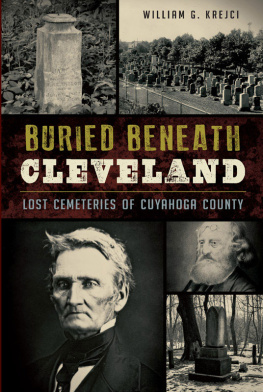Published by The History Press
Charleston, SC
www.historypress.net
Copyright 2017 by Eric Musgrove
All rights reserved
Front cover: State Archives of Florida.
First published 2017
e-book edition 2017
ISBN 978.1.43966.162.8
Library of Congress Control Number: 2017934936
print edition ISBN 978.1.62585.823.8
Notice: The information in this book is true and complete to the best of our knowledge. It is offered without guarantee on the part of the author or The History Press. The author and The History Press disclaim all liability in connection with the use of this book.
All rights reserved. No part of this book may be reproduced or transmitted in any form whatsoever without prior written permission from the publisher except in the case of brief quotations embodied in critical articles and reviews.
To Sarah, Alex and Abby, for putting up with my hours away from them, and for those in Suwannee County who have come before me
CONTENTS
ACKNOWLEDGEMENTS
I would like to thank all those who have helped in this project, and doubtless I will forget some. First of all, my family for their support and understanding during the many hours I was holed up in my home office researching and typing. A special thanks to my wife, Sarah, who as usual has provided her support for my writing as well as proofing the text.
Also, for those in Suwannee Countys history who took the time to photograph or write down what transpired, allowing future historians such as myself the chance to learn just a little bit about what they faced during their lives. I must also thank the Suwannee County Clerk of Courts Office for making it possible for the public to see firsthand the records that cover so many facets of our countys history. The Suwannee County Historical Commission and the Suwannee County Historical Museum have also preserved many photographs, documents and items that show the history of our citizens. The Photographic Collection of the State Archives of Florida is a wonderful central repository of thousands of documents and photographs that have been helpful in the completion of this work.
I must thank my assistant Logan Woods, who on her own time performed research, pored over my manuscript and offered many suggestions. I must not neglect the many citizens who, knowing my love of history, have dropped off photographs, documents and stories that have expanded my knowledge of Suwannee County.
I must also thank my acquisitions editor, Amanda Irle, and copy editor, Rick Delaney, for their working with me during the months that it took to prepare this work for print.
I could not have done it without all of you.
INTRODUCTION
The birth of Suwannee County took place on December 21, 1858, when the Florida legislature carved out the western portion of Columbia County. However, its history spans long before that time. Whether it was the Native Americans, the Spanish or others who lived in the area before the Americans arrived, they each have made their mark on the countys history. The natural springs of the Suwannee River in locations such as Lower Mineral Spring (now Suwannee Springs) and elsewhere brought health resorts to Suwannee County.
Suwannee County came of age during the Civil War when many of its men went off to serve. The citizens left behind did their best to continue life as normal, working in the fields and providing essential government services. Some citizens made their mark on the war, including Live Oak native Lewis Thornton Powell, who was involved in the Lincoln assassination. The end of the war saw a changed lifestyle for many Suwannee County citizens as slavery was outlawed throughout the United States. The county grew after the war as citizens from all over the country flocked to the pristine waters and virgin timber of the area. Railroads began to dot the landscape as free men and convicts alike worked in the natural resources. By the first years of the twentieth century, such economic opportunities had made the county seat of Live Oak the fifth-largest city in the state of Florida.
However, a devastating boll weevil attack during World War I crippled Suwannee Countys cotton production, and it took years to find another cash crop to replace it. Meanwhile, central and south Florida were growing exponentially as citizens relaxed at the beaches and health resorts located there, leaving places such as Suwannee Springs as they realized the sulfur waters had no cleansing effects. Coupled with the Great Depression, Suwannee Countys growth slacked off as farmers struggled to make ends meet. Many communities withered or died as their citizens moved to more profitable areas of the country. The countys political clout, however, remained strong.
The Suwannee River gently meanders through south Georgia and north Florida, as it has done for countless ages. It is seen here around 2000. United States Geological Survey.
World War II brought some growth into the county as Florida benefited from war production and training. After the war, the county lost much of its statewide political influence as legislative boundaries were modified to incorporate the drastic growth of central and south Florida. Agriculture continued to remain the most robust economic value Suwannee County had to offer. The rise of ecotourism within Florida has now led to a major boom in Suwannee County as people visit the numerous springs or canoe down the majestic and gently meandering Suwannee River.
The history of Suwannee County, invariably linked forever with being way down upon the Swanee River, has seen its fair share of interesting moments. Some of those moments are remembered by the local population, used as marketing promotions for those who visit Suwannee County or incorporated into the many historic buildings that dot the landscape.
Other historical moments, however, have long been forgotten. Found in dusty attics, county archives or other locations, these historical gems are sometimes even more interesting than well-known aspects of Suwannee Countys history. From former ways of living to presidential assassins to wives of famous pilots (and everything in between), this lost history, as it were, has helped to define Suwannee County and its inhabitants. It is for these lost memories that this work is written.
PART I
FORGOTTEN PEOPLE AND EVENTS
PRESIDENTIAL CONSPIRATOR
Lewis Thornton Powell
If you look long enough in any locales history, you will find that there are good parts of history as well as bad. As some have said, History is what it is; we cant change it. Or, as someone else once said, Those who dont know the past are doomed to repeat its mistakes. Such is the case with young Lewis Thornton Powell.
Powell was born in Randolph County, Alabama, in 1844, the youngest of eight children of George C. Powell, a Baptist minister, farmer, blacksmith and schoolteacher. When Lewis was three, his father moved the family to Georgia, where they resided until 1859. In that year, George Powell moved the family to a site just outside of Live Oak in recently established Suwannee County; Lewis was fifteen at the time.












